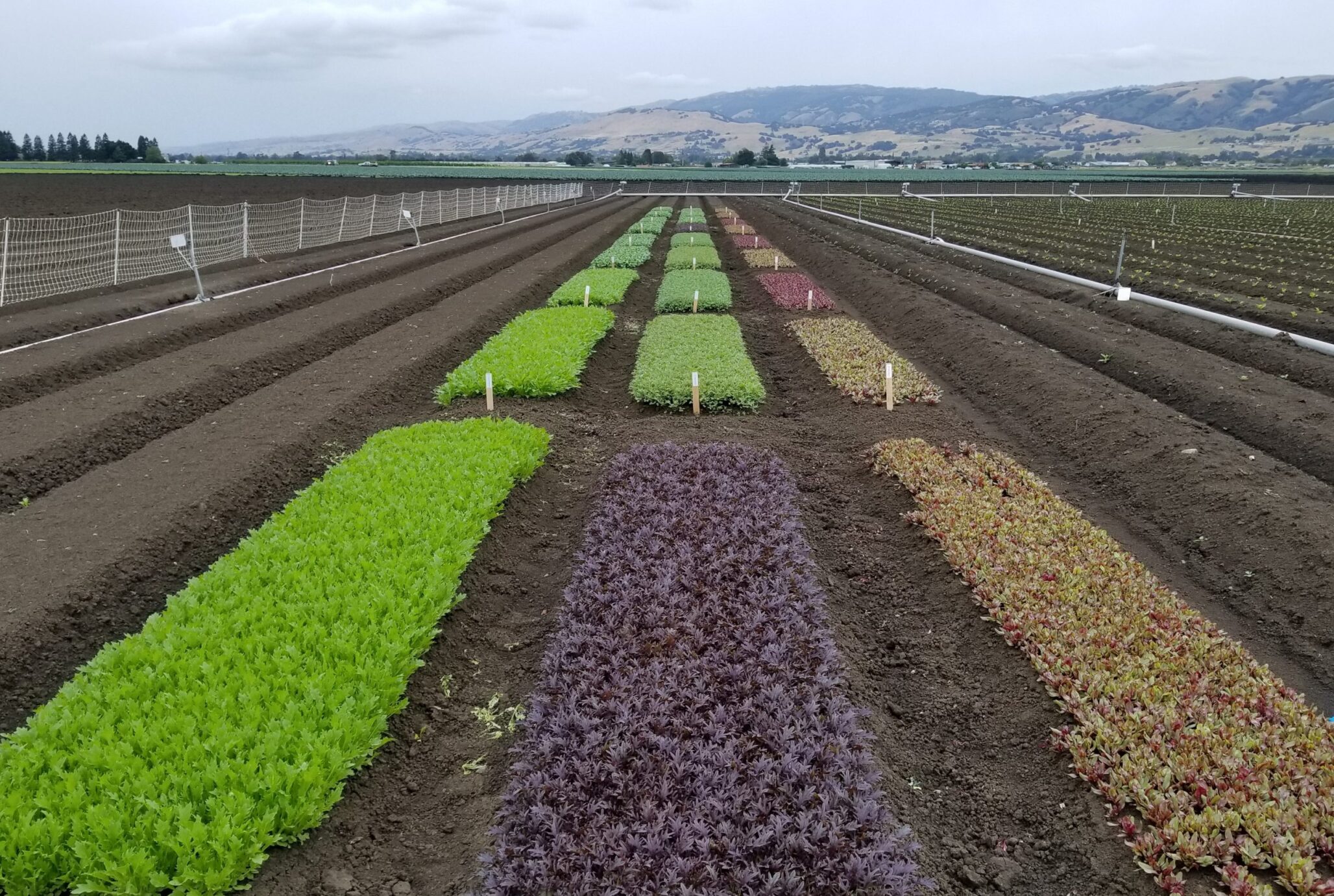Charlie Dowling, greens breeder for Vilmorin-Mikado in America, chats about an ever-expanding gene pool of leafy genetics.
In our last article, we talked about Vilmorin-Mikado’s rich history, and how they were continuously working to expand their large gene pool to better beef up their pillar crops: leafy greens and brassica crops.
Their largest growing pillar? Leafy crops.
“Originally, we started with just lettuce under our umbrella,” says Charlie Dowling, greens breeder for Vilmorin-Mikado in America. “Recently, we acquired a seed company in the Salinas Valley as well as a spinach breeding program in Denmark, which has really opened up our breeding program.”
Now, instead of a narrow focus on just lettuce, Vilmorin-Mikado has opened up their breeding program to greens, such as kale and arugula, and spinach as well.
Dowling says in his breeding program, they have roughly 10 varieties of leafy greens, all which come with their own challenges.
“With 10 different species, we have a few challenges that pop up,” he says. “There are different life cycles such as annual crops versus biannual crops. Another issue is the mode of reproduction: you can have cell pollinated crops, wind pollinated crops or insect pollinated crops.
“Switching from kale to arugula to Swiss chard can become challenging, but luckily, we have individual breeding strategies for each species to help our research operations team.”
The biggest focus Dowling’s team is currently focusing on? The baby leaf market.
“Our main goal is to release varieties for the baby leaf marketing, targeting the U.S. and European industry,” he says. “We want to be competitive in the market, and our drive is that we want to be in every salad mix.”
That means, every bag of salad that includes baby leafy greens, Dowling aims to have at least one Vilmorin-Mikado variety in it.
“In addition, we want to be known for having varieties that perform better than any of our competitors in the local U.S. market,” he says.
That boils down basically to making sure that the varieties are equipped with improved resistance to downy mildew, he says.
“Take kale,” Dowling says. “Downy mildew is a huge issue, and it’s almost impossible to come to market in the organic industry without a resistance package for downy mildew.”
Dowling says that means you can be competitive and bring new colors, leaf shape and even higher yield to market … but without the resistance package, the variety won’t make it in the marketplace.
One thing that helps their breeding program package and breed for this downy resistance is their location.
“We’re local in the Salinas area,” he says. “That gives us an advantage, because we’re creating varieties that are adapted to our local market.”
Dowling says actively speaking and checking in on challenges local growers are facing is one of his top priorities, because it helps him adjust his breeding strategies to meet their needs.
“I can visit with growers and see what they really want in a variety, and what the market trends are,” he says. “It’s important to create a personal connection with our customers, even though I’m not a sales representative. It’s not often customers get to speak directly with breeders, and it’s always fun to create that connection between our local breeding program and the local growers.”
In the end, Dowling says there’s one thing he loves about his work.
“As a scientist, a breeder and a creative thinker, it’s really fun to look at the potential opportunity that the leafy market opens,” he says. “Working on so many different species allow us to potentially bring something to market that’s never been seen before. Think about broccolini — a recent market phenomenon. It’s an exciting thought to see all the potential we can do in our program.”











